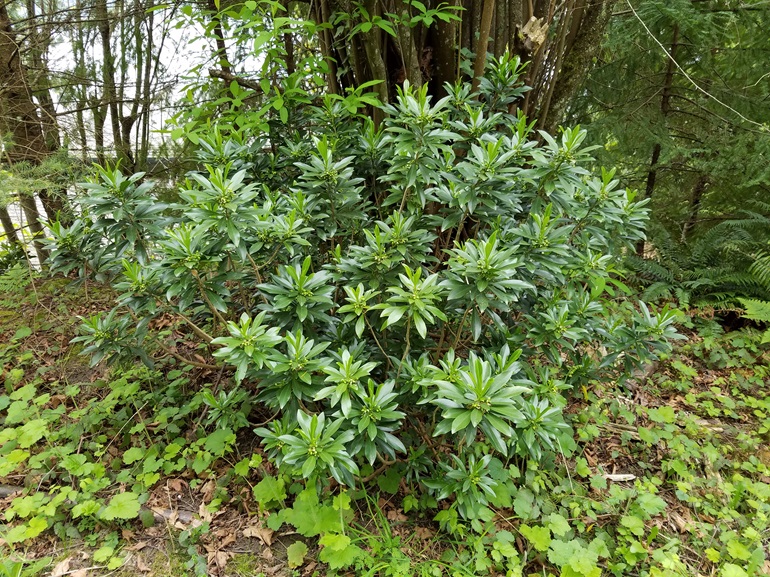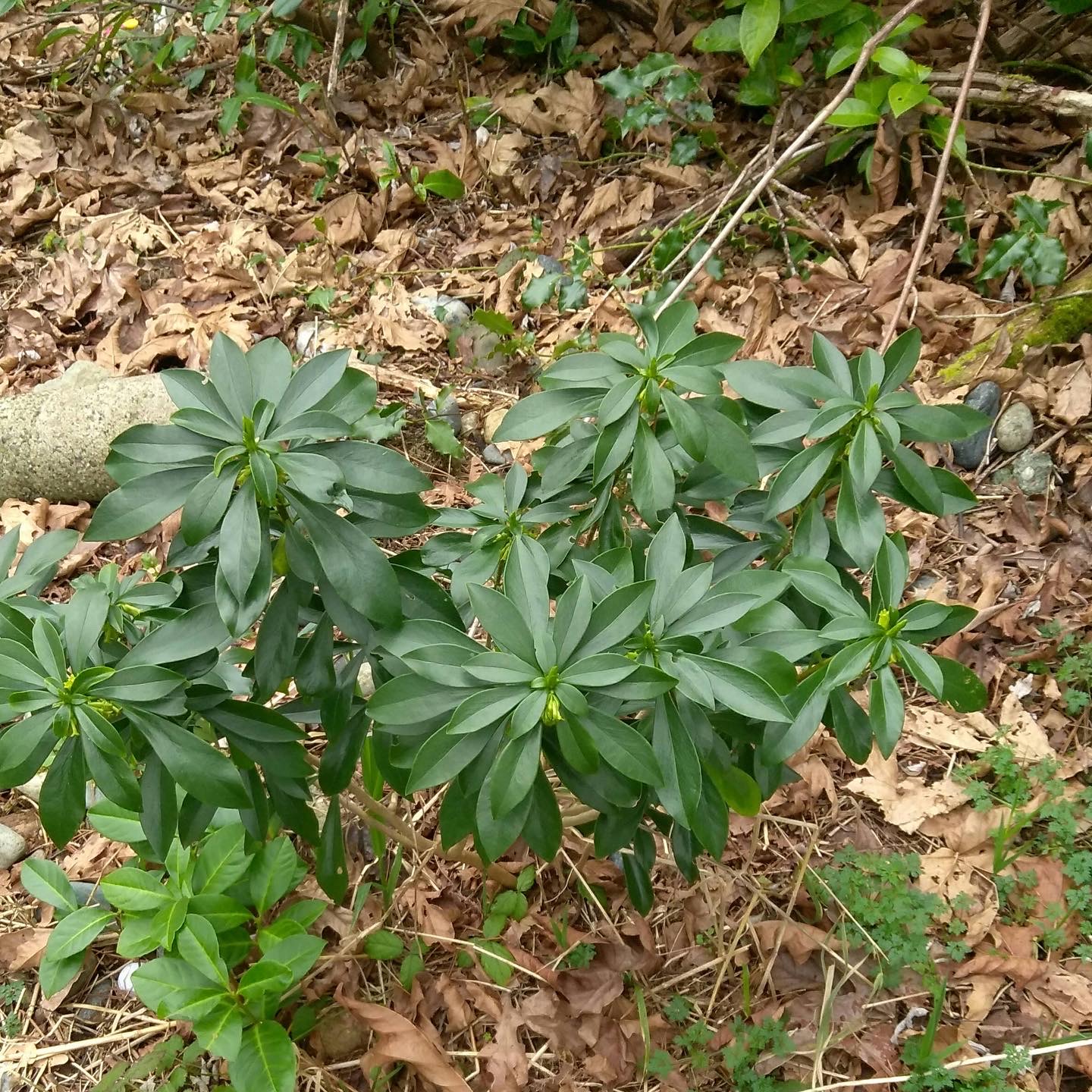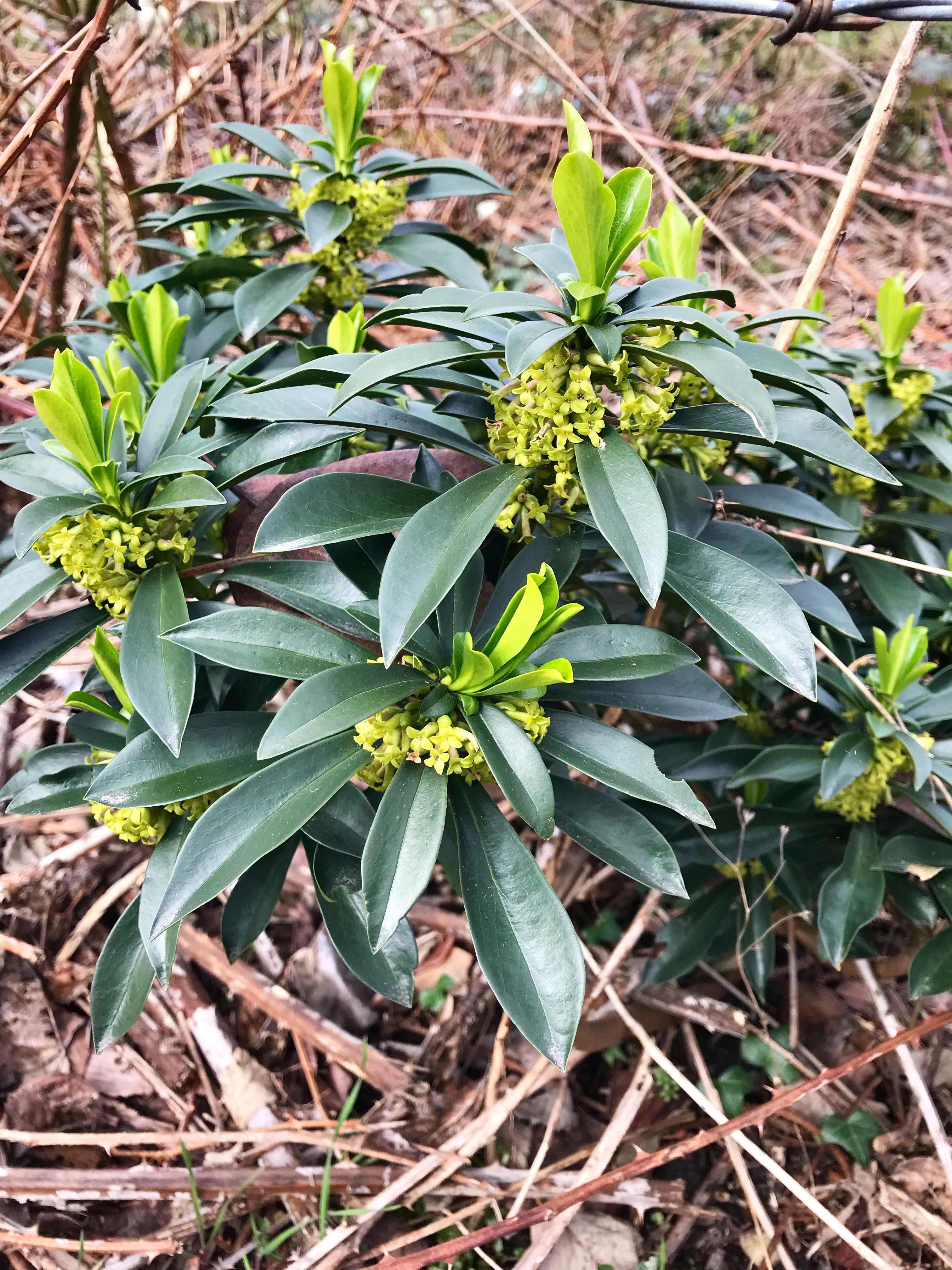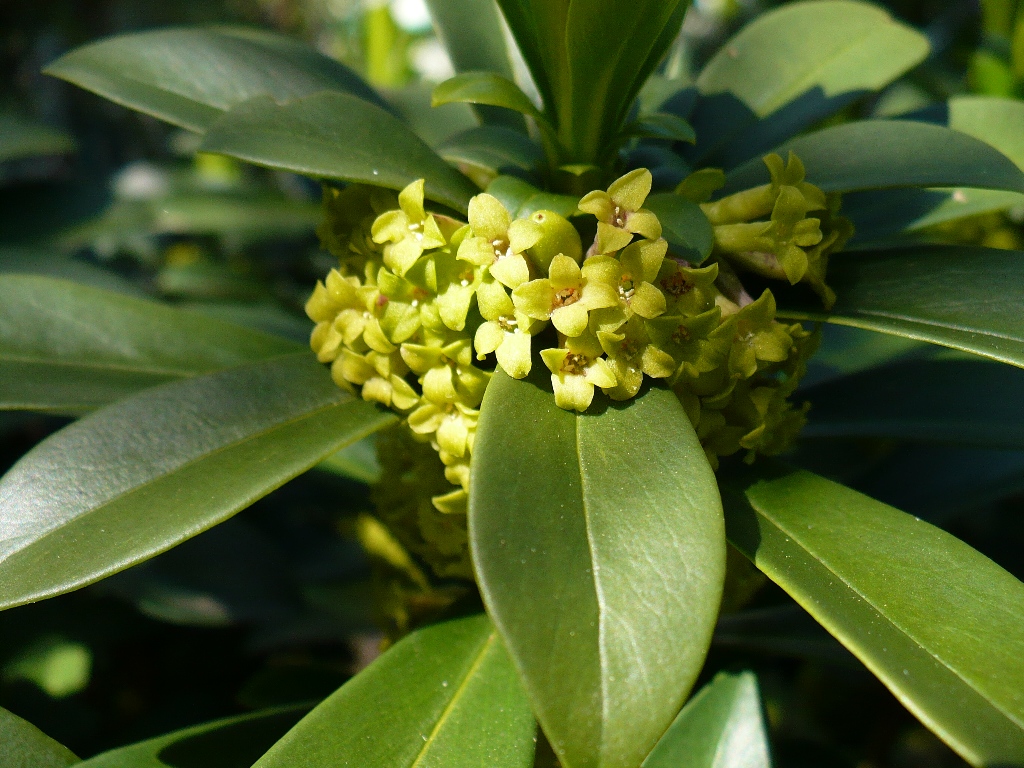Spurge laurel identification and control
Information about the noxious weed spurge laurel. Spurge laurel is also known by its Latin name, Daphne laureola.
About this weed
Spurge laurel is a non-regulated Class B noxious weed. This means due to how widespread it is, property owners are not required to control this species on their property, though it is encouraged.
Spurge laurel is also on the Washington quarantine list and it is illegal to buy, sell or offer it for sale in the state.
Spurge laurel is known as Daphne laureola and it is in the daphne family. Other common names include daphne, daphne spurge, olive spurge, and wood laurel.

Why it's a problem
- All parts of spurge laurel are highly toxic to humans and livestock.
- It can rapidly colonize areas, outcompeting native plants.
- Once established, this plant is very difficult to eradicate.
- Spurge laurel is especially problematic in Garry oak ecosystems in British Columbia.
Plant description
Spurge laurel is a slow-growing, shade-tolerant, long-lived evergreen shrub from Europe and the Mediterranean region. It has escaped from gardens and naturalized in woodlands and other shady places. Spurge laurel can grow in a wide range of conditions, but it thrives in full to partial shade and well-drained soils. This shrub is usually found growing in isolated clumps, but it can form large, dense monotypic (landscape filled with one species of plant) stands in some cases.
The form of the plant looks somewhat like a small tree, 2 to 4 feet tall, with the leaves densely whorled (a leaf arrangement where three or more leaves grow outward from the same point on a stem) near the top of the stem. Leaves are very dark green, shiny, smooth, and thick. The twigs are stout and have a strong odor when cut.
The flowers are small and inconspicuous, light green to yellow with orange stamens (male fertilizing part of a flower), in clusters of 2 to 10 at the base of the leaves, and particularly fragrant at night when they attract moths. The fruits are poisonous, one-seeded, oval, black berries. Flowering occurs from late January to late March or early April, followed by berries in early summer.
Its primary means of spread is by birds and rodents eating the berries, although it can also spread vegetatively by root sprouts. The berries, leaves, and bark are poisonous to humans, cats, and dogs. Handling the plant can cause contact dermatitis.




Be aware of look-alike plants
Spurge laurel can be mistaken for many garden plants such as rhododendrons, laurels, or spurges. When in doubt, take photos and consult your local master gardener group, share them with us, or report them on iNaturalist.
What to do if you find it
Because spurge laurel is so widespread, property owners in King County are not required to control it. King County is not generally tracking infestations. We can provide advice on how to control spurge laurel, but there is generally no legal requirement to do so. The King County Noxious Weed Control Board encourages property owners to remove spurge laurel where possible, and to avoid introducing it to new landscapes.
Control methods
We recommend using a combination of methods to control noxious weeds. In areas with few weeds, it is important to act quickly before they become harder to control. Make a long-term plan as it often takes several years to get rid of most weeds. Start in the least infested areas first and then move into more heavily infested areas.
Manual control
Due to the irritating toxins of the sap, stems, leaves, and fruits personal protective gear such as gloves is recommended when handling.
Seedlings and young plants can be hand-pulled. Larger plants can be pulled with a Weed Wrench™ or similar tool, but all the roots should be removed to avoid re-growth from root sprouts. After pulling, the area should be monitored for new seedlings and covered with a deep mulch.
Weed Wrench™ and other tools can be borrowed from Tool Libraries in the region.
Mechanical control
For large populations it might be more cost-effective to use mechanical methods. Plants up to three years old can be controlled effectively (up to 95% mortality) with a weed whip or similar tool by cutting the plant close to the ground level. Older plants should be cut below the soil line to minimize resprouting. Volatile plant toxins may be released during cutting, so protective gear is recommended.
Chemical control
Due to the plant’s ability to sprout from suckers, it may be advisable to apply herbicide to stems immediately following cutting. Triclopyr has been shown to be effective in test plots.
See the PNW Pest Management Handbook for the most up to date and specific method for chemical control of spurge laurel.
Stay safe when using herbicide:
- Always read the label before use.
- Wear a long-sleeved shirt, long pants, shoes, and eye protection.
- Follow state and local regulations.
For more information or a site-specific control recommendation in King County, contact the noxious weed program. For information in other counties in Washington state, contact your local weed board or extension office.
Disposal instructions
Clip the branches with berries and bag them. Dispose of the plant in the garbage to prevent spread.
Washington State Noxious Weed Control Board pamphlet on noxious weed disposal

 Translate
Translate